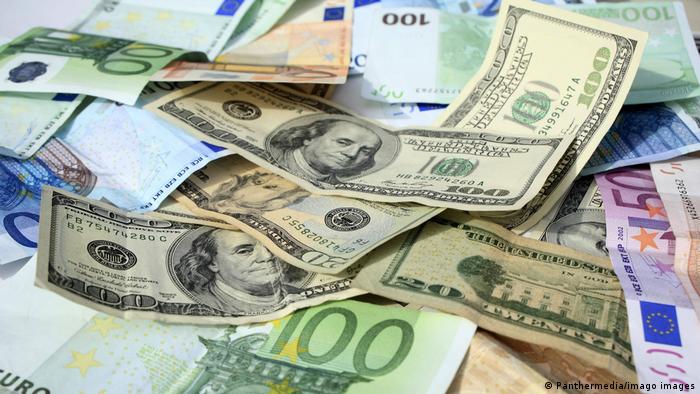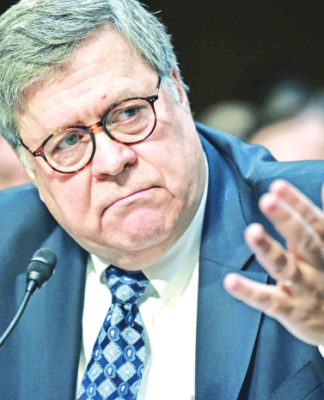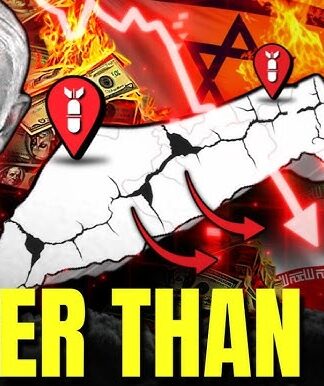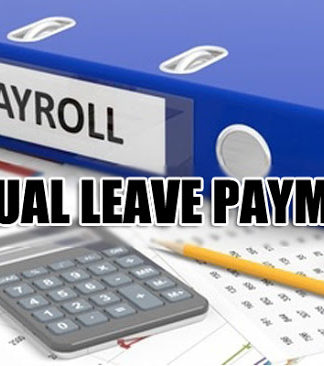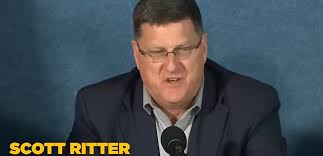Euro falls to 20-year low against the dollar
The euro has slumped to its lowest since 2002 against the dollar amid fears that a recession in the eurozone could be looming. The currency fell as low as $1.0281, threatening a push towards dollar parity.
Euro and dollar notes in various denominations
The euro has shed some 8% against the dollar so far this year
The eurozone’s shared currency dropped to its lowest value against the dollar in two decades on Tuesday, as a new surge in European gas prices deepened fears of a recession.
Economic growth in the eurozone has floundered, with prices soaring amid the economic impact of the war in Ukraine.
How severe is the drop?
The euro fell by as much as 1.3% against the dollar to $1.0281 — its weakest rate since December 2002.
The dip is part of a longer-term trend, with the euro weakening 8% against the dollar this year. It brings the euro closer to dollar parity — something unseen since the euro’s creation in 1999.
Euro-related currencies such as the Hungarian forint, Polish zloty and Romanian leu have also weakened considerably against the US currency.
Meanwhile, stocks indices in Frankfurt, London and Paris dropped more than 1% by late Tuesday morning amid worries of an economic downturn across Europe.
The euro selloff also saw the currency drop to its lowest against the Swiss franc since 2015, when the Swiss National Bank abandoned its currency cap. It also fell against the pound, despite sterling facing its own economic woes.
Other currencies, such as the Japanese yen and Australian dollar, are also struggling amid fears of a global recession and a soaring dollar, seen as a safe haven in times of insecurity.
Watch video02:34
What is inflation?
Why is the euro dropping in value?
The fall of the euro is linked to growing fears about the likelihood of a recession in the 19-nation eurozone.
Survey data has shown a slowing in business growth across the zone. Indicators suggest the region could slip into decline as the cost-of-living crisis tightens consumer demand.
According to survey data published on Tuesday from S&P Global’s closely-followed monthly purchasing managers’ index (PMI) — a marker of corporate confidence — dropped to 52.0 in June from 54.8 in May.
“The manufacturing sector is already in decline, for the first time in two years, and the service sector has suffered a marked loss of growth momentum amid the cost of living crisis,” said S&P chief business economist Chris Williamson.
“Household spending on non-essential goods and services has come under particular pressure due to soaring prices but business spending and investment is also waning in response to the gloomier outlook and tightening financial conditions.”
On Monday, European Central Bank Vice President Luis de Guindos warned that the eurozone economy could face a recession if industry is forced to adjust to an energy shortage.
European gas prices peaked to their highest in four months amid supply concerns after a dip in flows from Russia. Strikes by Norwegian oil and gas workers have also exacerbated supply concerns.
The drop is also tied to a rise in the value of the US dollar as the Federal Reserve continues to raise interest rates in its fight against inflation. This is in contrast with the European Central Bank, which is planning more modest increases.
rc/rt (Reuters, AFP, dpa)









